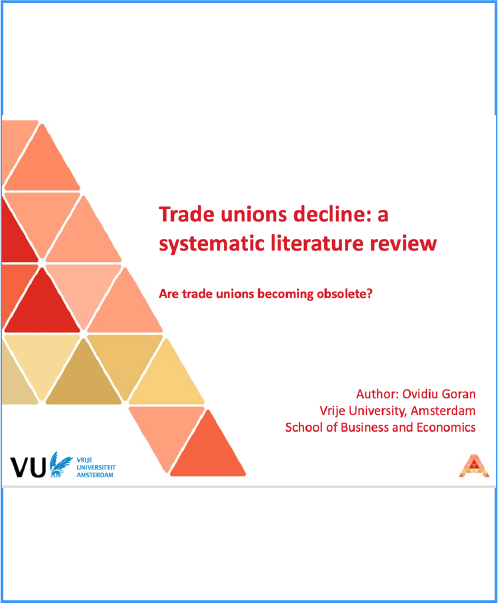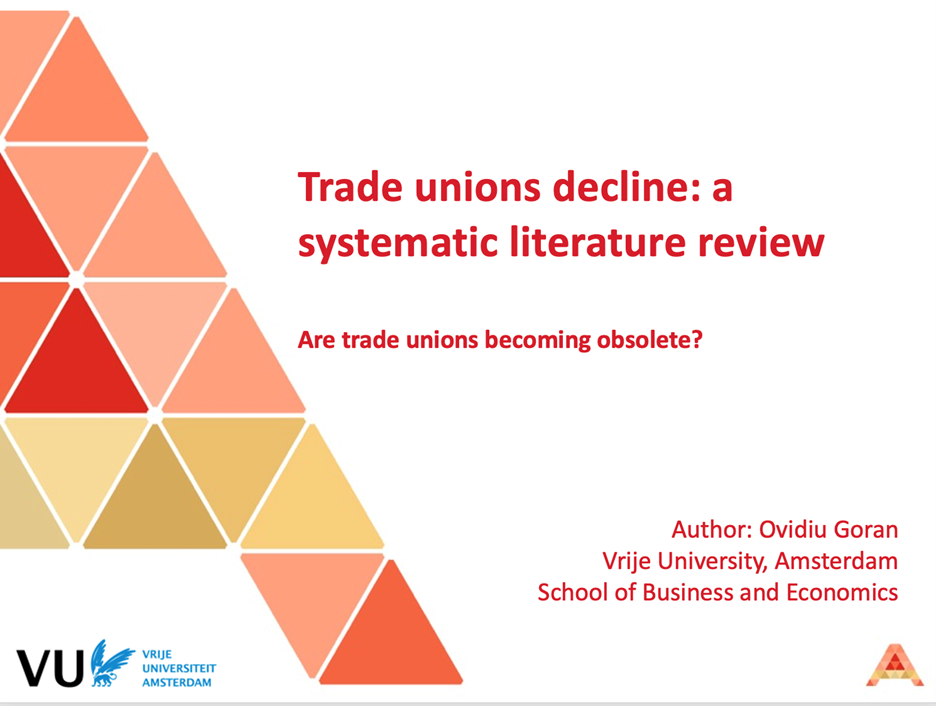
Trade unions' decline: A systematic review
Author: Ovidiu Goran
Vrije University, Amsterdam School of Business and Economics
Business Research Institute (ABRI)
Amsterdam, 1081
ABSTRACT
A key challenge in achieving the goal of ‘social justice for everyone, everywhere’ is ensuring the survival of trade unions. While scholars have started to explore how union density, membership, and collective bargaining coverage have declined over the last century, little attention is given to the cause-and-effect relationship leading to unions’ obsolescence, as well as potential evolutionary alternatives for trade unions in the future’s work inequality turmoil. We draw on peer-reviewed research papers in industrial labor relations, economics, sociology, political science, law, business, and management, as well as longitudinal datasets provided by the International Labour Organization, Eurostat, the US Bureau of Labor Statistics, and the OECD.
Following a systematic analysis of the literature on the decline of trade unions, we have identified and coded the main causes and effects, highlighting patterns and tensions to predict potential evolutionary scenarios. Five endogenous and exogenous causes of the decline of trade unions have emerged, coded as technological, regulatory and institutional, organizational, employer-related, and sociological in nature. Consequently, the effects echo in society, the economy, and the trade unions’ power resources. Our findings are then incorporated to formulate a definition and construct a conceptual model illustrating the decline of trade unions.
We support the conclusion that the state, trade unions, and employers need to forge a collaborative partnership to achieve a meaningful social return on investment (SROI). This entails working together strategically and synergistically to maximize the positive impact on society, beyond just financial returns. It involves a shared commitment to social responsibility, employee well-being, and broader societal goals, emphasizing a collective effort toward a more sustainable and socially beneficial outcome.
